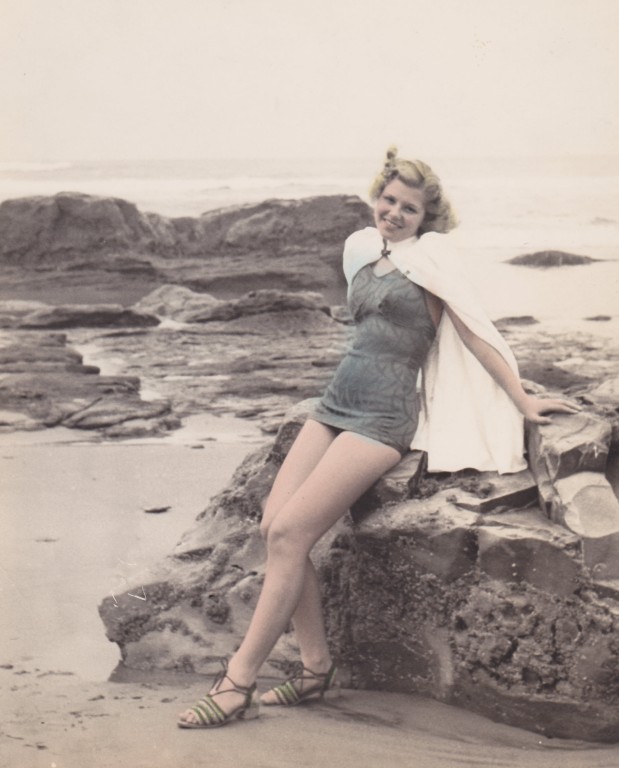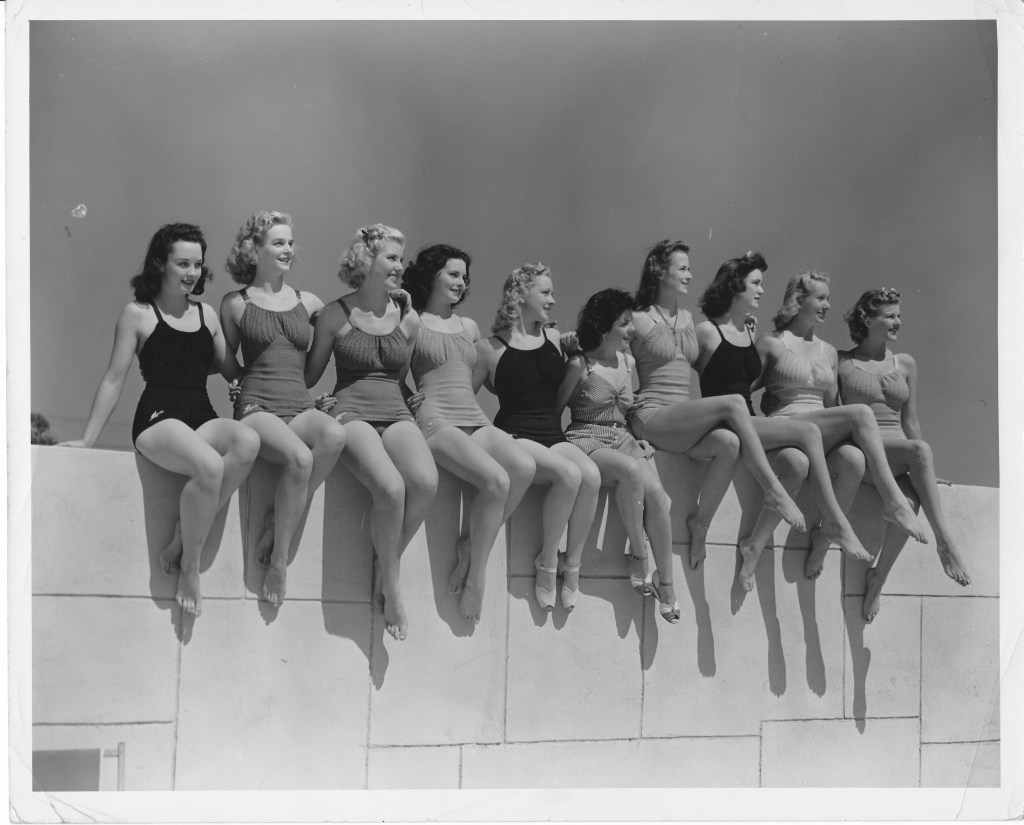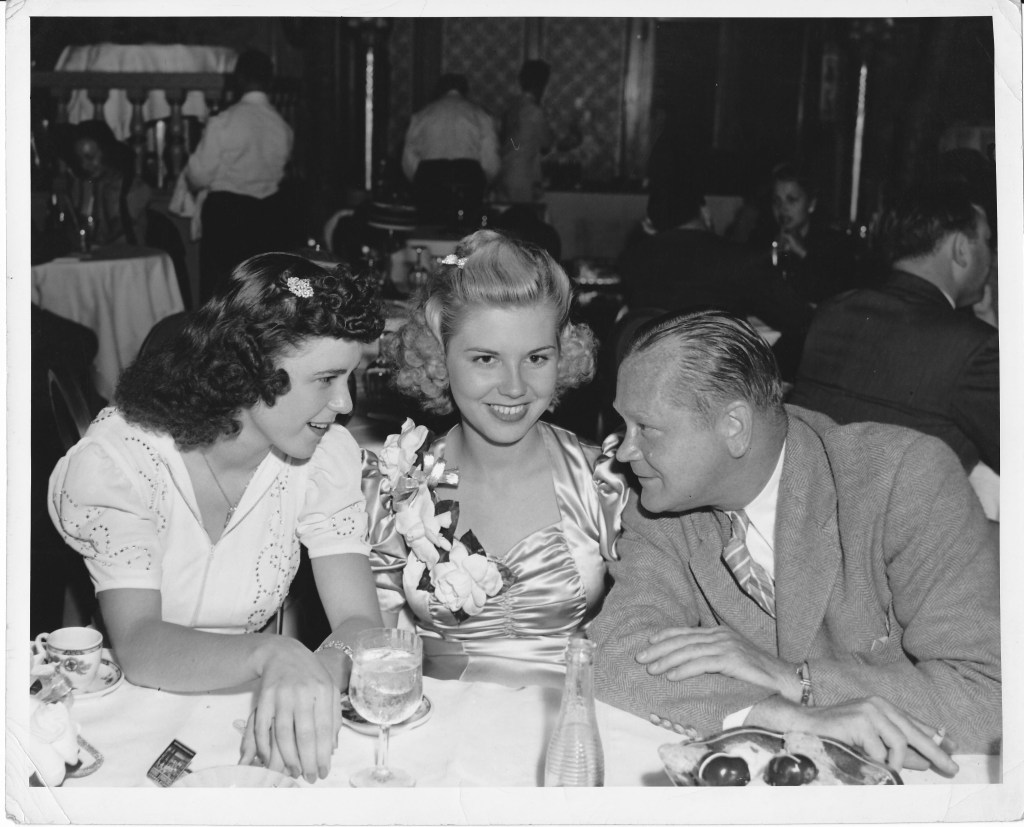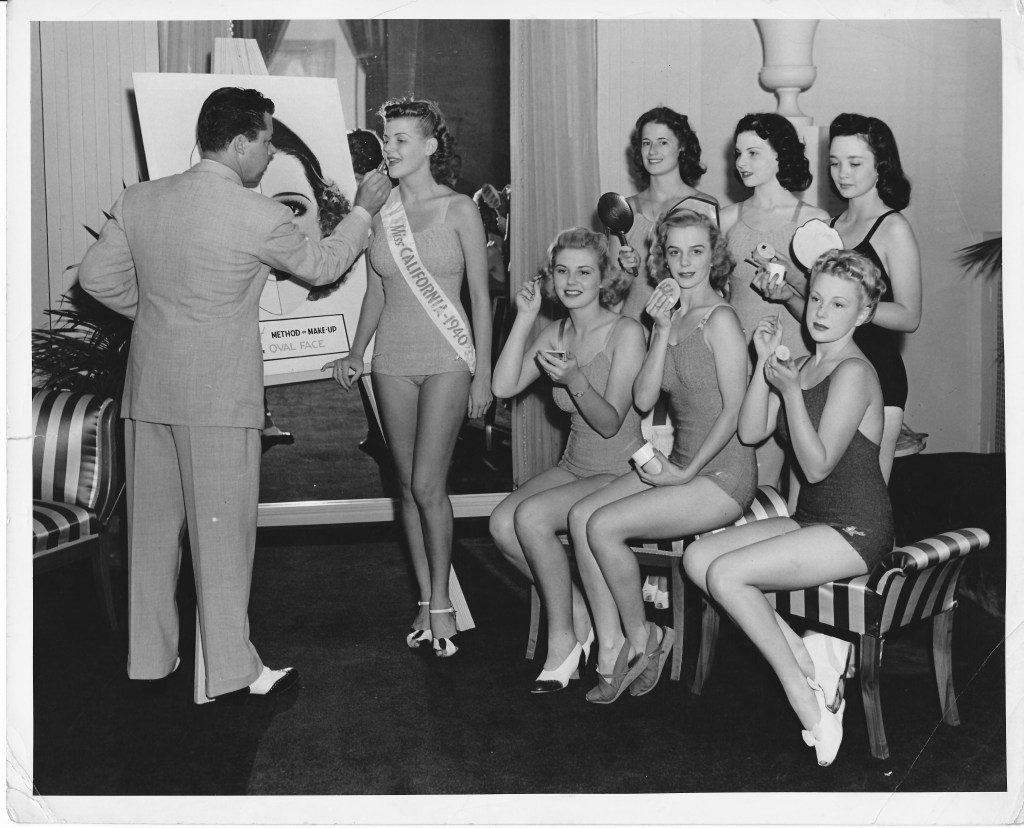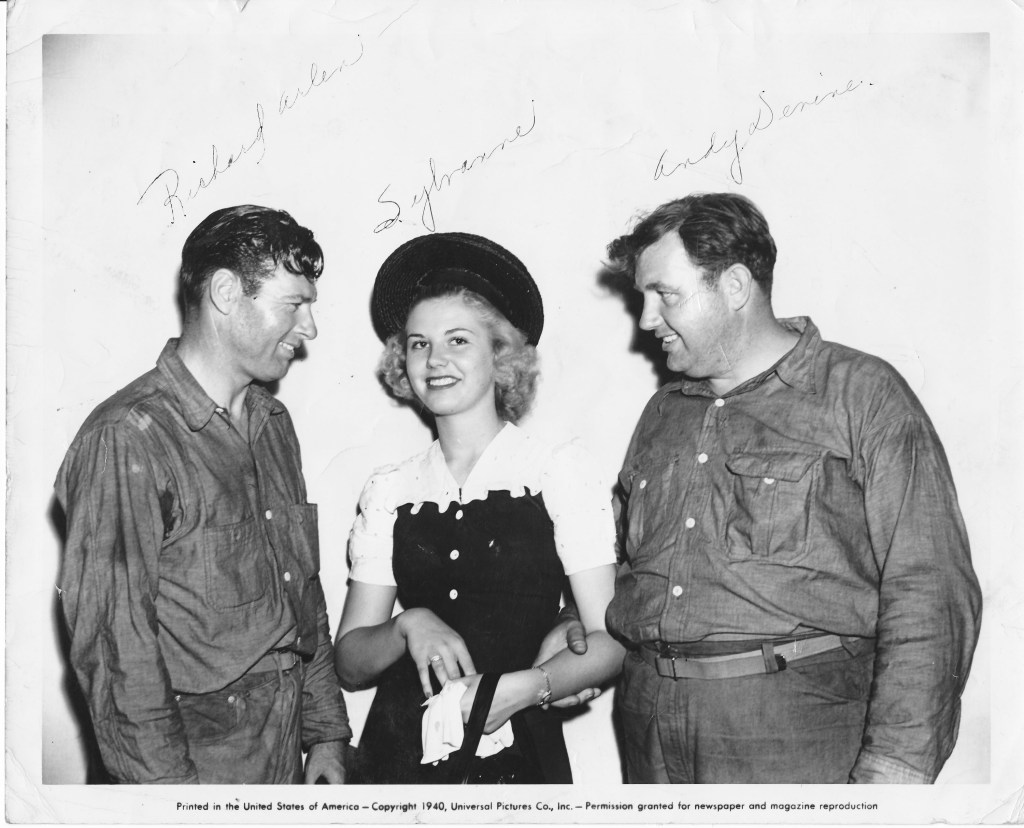“The fact is, of course, that in real life beauty is not an asset, but a handicap, and the beautiful woman has the least possible chance of attaining happiness, or success, or both.”
Attributed to a well-known Englishwoman in the London Daily Mail 15 December 1921
Life for women in the 1930s was quite different than it is today. Men ran the world, as epitomized by the list of the Newport (Oregon) High School graduating class list in the paper: alphabetical by men and then alphabetical by women! A “woman’s place was in the home” and IF they were not married, the average woman was looking to get married. There were avenues to meet an eligible man, one of the best was college – another was just to be noticed. In this, Sylvanne Olson was no different. Having been blessed with exceptional beauty she was able to have some experiences that most girls her age were not able to have. But what appeared to be a valuable endowment in her youth may not have contributed to her happiness later in life.
The late 30’s to early 40s was the evolution of the bathing suit competition. Due to the figure-hugging nature of these garments, photography eventually evolved into swimsuit photography exemplified by the annual Sports Illustrated Swimsuit Issue. Beauty contests also required contestants to wear form-fitting swimsuits. Swimsuit companies, such as Catalina, began to have contests to showcase their wares. These contests were open to young women across the country and their participation was preferred over professional models, likely to create more of a grassroots feel.
During this time, Sylvanne’s family had moved to Newport from North Cove in Pacific County, just north of the Oregon border in Washington. Sylvanne’s father, Harry Olson, was a crab fisherman and he felt that the tax structure in 1936 was more conducive to his business interests on the Oregon Coast, hence the move. Adjustment to the new school and friends seemed to be fairly easy for her and she becomes a member of the high school sophomore debate team, as well as becoming involved with the local Rainbow order, traveling to Corvallis with her fellow members to attend various events. Newport was surely more cosmopolitan than North Cove!

Having settled into life in Newport, Harry was active in Newport boosterism. He was enthusiastic about mounting the First Annual Crab Festival in Newport in 1938 to encourage tourism and introduce the local catch to the uninitiated. His daughter, by then, was known as a local beauty and was chosen as one of the mermaid princesses who served as figureheads for the festival. The number of attendees to the festival vary from 2,000 to 25,000 depending on which account you read. At any number it was quite an event – billed as a free lunch – and people came from as far away as Portland to sample the crab.

Tourism became a sought-after form of revenue and with the new coast highway developed into a real possibility. Sylvanne was also a part of the commercial community and became a swimsuit model for a local dress shop while still in high school.

After high school graduation Sylvanne entered what was then known as Oregon State College (now OSU), joined a sorority and seemed to settle into the academic life. Or perhaps the hunt for a husband. Few records remain of her time there. A note in the Corvallis paper about a fashion parade benefit names Sylvanne as modeling for her sorority, Gamma Phi Beta.
Along the way Sylvanne entered a swimsuit competition and was chosen as one of ten from 4,000 or 40,000 (depending on which article you read) nationwide entries. Can you imagine? The prize for being chosen was a trip to Hollywood. One of the ten young women chosen in addition to Sylvanne was Rosemary LaPlanche, who later became Miss America. Talk about star power! Since the contest was sponsored by Catalina, the girls appear in photos wearing swimsuits as they travel about town meeting lots of famous people and seeing the sights. Sylvanne’s parents accompanied her as chaperones.
NEWPORT, Aug 22 – (Special) – Sylvanne Olson, daughter of Mr. and Mrs. Harry G. Olson, has returned home following an exciting ten-day stay in Hollywood, Calif., as guest of the Catalina people. Miss Olson was one of 4000 girls entering a bathing-suit-photo contest, and was one of the final ten of this number selected as a winner. She met many movie stars during her stay and made numerous trips over Hollywood.
Miss Olson, who was sponsored by the Beatrice Shop, was quartered at the Ambassador hotel, appeared on the Burns and Allen radio program, at the Earl Carroll and Grauman Egyptian theaters, attended a dance in her honor at the Cocoanut Grove and was honored with dinners at Beverley Hills and at the Biltmore Bowl. She also visited Warner Brothers and Universal Studios.
From the Corvallis Gazette 22 August 1940: Bathing-Suit-Photo Contest Girl Home

The bombing of Pearl Harbor and the United States entry into World War II up ended the lives of many Americans. In the case of Sylvanne it created some interesting opportunities. For reasons we don’t know, other than the call for women to join the war effort, Sylvanne ended up in Dayton, Ohio around October of 1942. We‘re not sure of her job but it apparently put her in proximity with a certain Lt. R. L. Kimbrough.
We’ve not found much about their courtship. Letters from Bob to his father during this time make no mention of Sylvanne. A letter to dad from Bob April 14th, 1943: “evidently sister <his sister Evelyn> has been singing the Blues about my not seeing her which isn’t unusual for women they’re always complaining about something. However I don’t have the time or gasoline to drive about 20 miles for a round trip to see her. I’m not living within the city of Dayton anymore and it’s quite a trip across town to visit”. He asked about home and then in a new paragraph: “My status is as per usual and nothing is available for a report I’m still single, lazy and 24.”
Fast forward a month. Letter of May 15th, 1943: “I saw sister the other night for dinner. She ate with me and the girlfriend. You’ll probably be surprised to hear this news since I’ve never had mentioned any of my female affairs before. Well it seems there’s a certain little girl from Portland OR that I’m very serious about so you’ll probably have a daughter in law on your hands this fall unless one or both of us back out which isn’t likely. She’s working here in Dayton now but is returning to Oregon this summer before we get married. She’s a swell person and I know you’ll like her. I’ll give you more details after our plans are a little more fixed.”
Plans were soon fixed and a date set: August 28. Sylvanne went home, was feted by the community and her family, and returned with her mother in tow to Dayton. It appears to have been a very small wedding ceremony. In addition to Mrs. Olson, Mr. and Mrs. Kimbrough attended from Guthrie, Kentucky; no other family is mentioned. Bob has been promoted to Captain by this time.

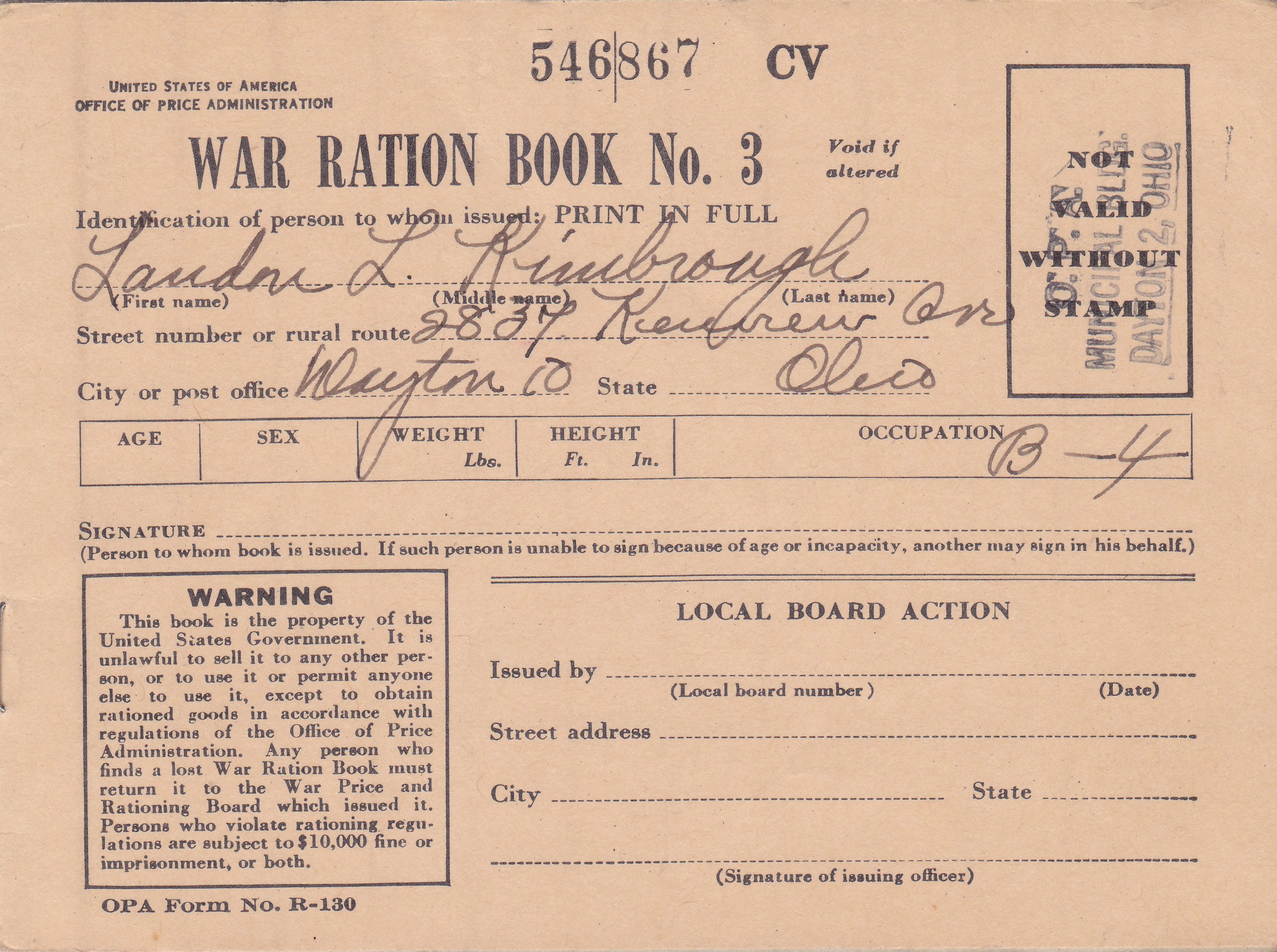

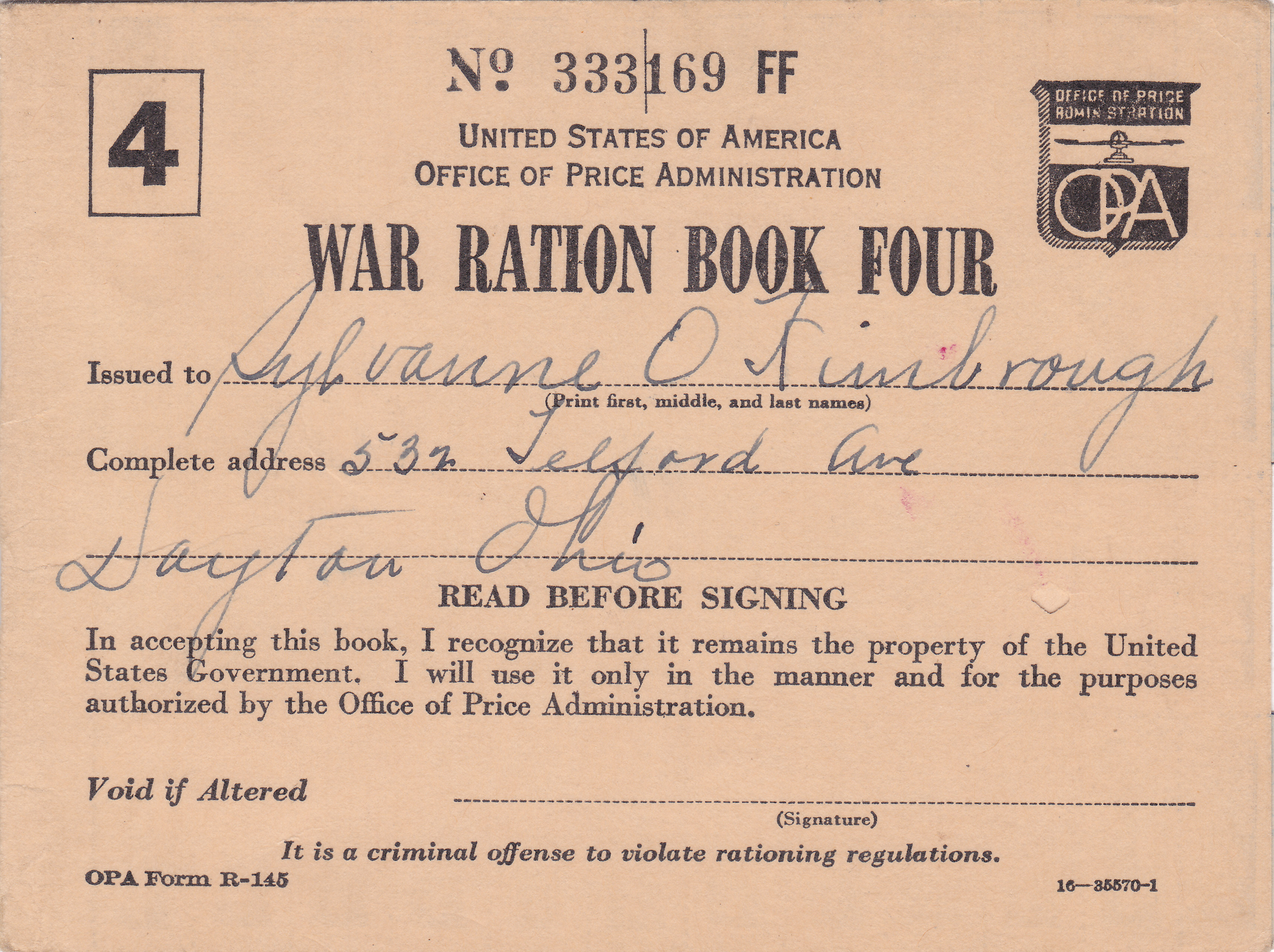
After a weekend honeymoon, the couple set up their home in Dayton. It’s doubtful that Sylvanne returned to her job. The next couple of years see juggling rationing and other wartime challenges, although Bob continues to be stationed at Wright Field due to his military assignment. Landon is born in January of 1945.
Eventually Bob is discharged from the military and the family moves to the West Coast to seek housing and employment for Bob. He subsequently goes to work for Boeing Airplane Company in Seattle and works there until the end of his career. Their second son, Harry, is born in 1948. Bob designs and builds their house in the Seward Park neighborhood and lives there until his death in 2009. Sylvanne died at home in 1980.

Sylvanne may have been a victim of her early success. Born a youngest daughter to an adoring father, one could imagine her being spoiled. Being feted for her beauty from the beginning, it could be that it was the primary means for her to measure her worth. Housewifery and motherhood failed to provide that level of attention. Many women have experienced the invisibility of middle age and find other ways to create meaning in their lives. Often alcohol and drugs – usually prescribed by a well-meaning physician – seem to help to ease the transition, until they become the problem. Her husband was raised in the traditions of the old south where women knew their place and their expectations for the marriage may not have aligned. They both were casualties, in some ways, of their times and the inherent pressures. For Sylvanne, what was an asset in her youth may not have contributed to her happiness later in life.

